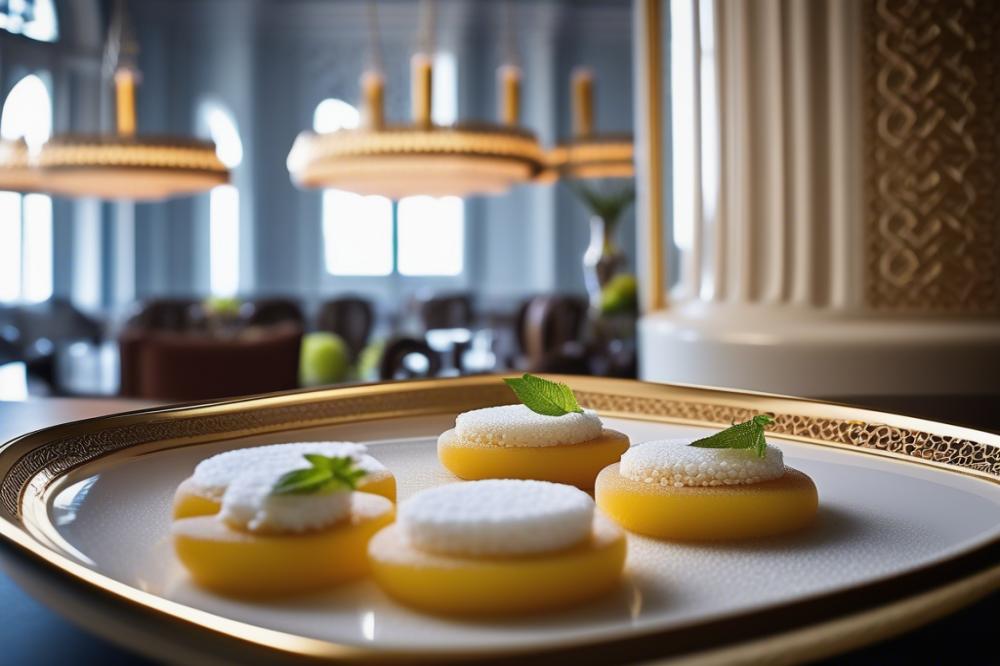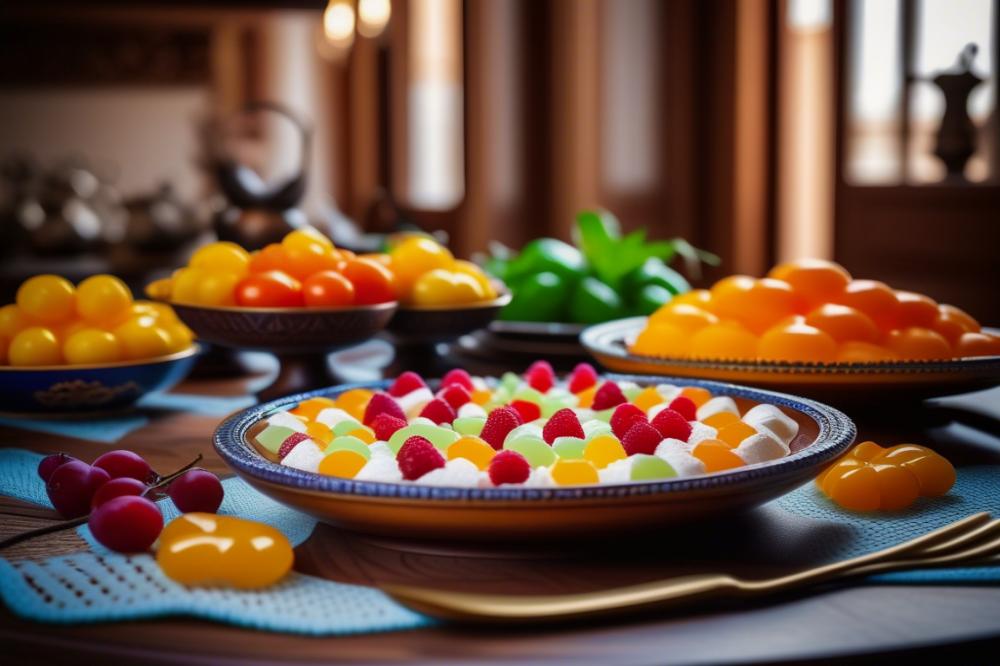Exploring the Essence of Greek Culinary Heritage
Glyka tou Koutaliou represents a cherished aspect of Greek culinary heritage. This phrase translates to “sweet spoon,” and it encompasses a delightful tradition of Spoon Sweets that has captivated the hearts of many. These treats often consist of fruit preserves, homemade delights, or even sweet syrups. They are not merely desserts; they symbolize hospitality and the warmth of Greek culture.
Spoon Sweets hold significant cultural importance throughout Greece and the broader Mediterranean region. At special occasions, such as weddings or religious events, they are served to guests as a gesture of welcome and friendship. This practice highlights their role in fostering community and celebrating life’s moments. Homemade treats like these often showcase ingredients sourced from local markets, reflecting regional specialties and seasonal bounty.
In this rich culinary landscape, a wide variety of flavors are available. Ingredients such as figs, cherries, and citrus fruits transform into heavenly desserts. Artisans painstakingly craft these artisan sweets, a labor of love passed down through generations. The resulting delicacies are often paired with coffee or yogurt, creating a delicious dessert pairing that tantalizes the taste buds. Each bite offers a glimpse into the warmth of Mediterranean cuisine.
As we delve into the sweet world of spoon sweets, we’ll discover the diverse flavors and varieties that define this beloved tradition. The journey begins with understanding how these traditional sweets elevate everyday moments into something truly special.
Glyka tou Koutaliou: A Sweet Heritage

Glyka tou Koutaliou represents more than just a dessert; it embodies a rich tapestry of Greek culinary heritage. These delightful concoctions date back centuries. Rooted in regional specialties, they showcase the age-old practices of preserving fruits in sweet syrup. Traditionally, families prepare these artisan sweets during seasonal harvests, celebrating nature’s bounty.
Homemade treats have long been a symbol of hospitality in Greece. Offering spoon sweets to guests demonstrates warmth and generosity. During special occasions, these colorful delights often take center stage. Birthdays, weddings, and religious celebrations highlight their importance in Mediterranean cuisine.
Many family recipes for these traditional sweets are passed down from grandmother to mother to daughter. Each generation adds a personal touch, ensuring that the flavors evolve while respecting the past. The meticulous crafting process involves selecting ripe fruits and simmering them slowly in sugar. This results in the irresistible, thick syrup that captures the essence of each fruit.
In Greek culture, serving these desserts is a ritual. When guests arrive, a small plate of assorted spoon sweets often accompanies a cup of coffee or tea. Such dessert pairing creates a moment of connection between hosts and visitors. Each bite tells a story, evoking memories and fostering relationships.
The significance of Glyka tou Koutaliou extends beyond mere enjoyment. It represents feelings of love and the pride of sharing one’s home. The vibrant colors and flavors speak to regional traditions, highlighting local ingredients and unique methods. Whether it’s bitter orange, cherry, or walnut, each flavor variety captivates the senses.
Culinary traditions, like these sweet delights, define cultural identity. They reflect the essence of Greek life, where food carries deep emotional and historical resonance. These cherished sweets continue to hold a special place in the hearts of many, ensuring that their delicious legacy will endure through time.
Exploring the Varieties of Spoon Sweets

Greek desserts often shine through their rich traditions. Among them, spoon sweets stand out with their vibrant flavors and versatility. These artisan sweets come in many forms, showcasing a wide array of fresh fruits transformed into delightful preserves. You can find delicious options made from cherries, apricots, and even walnuts. Each one carries a hint of local character, influenced by regional specialties.
Cherries are a popular choice. They ignite the taste buds with their bright color and sweet-tart balance. Apricot preserves, on the other hand, deliver a soft sweetness that pairs wonderfully with bread or yogurt. Walnut versions create a distinct blend of crunch and sweetness, making them a favorite for many. This variety ensures that there is a flavor for every palate.
Regional specialties play a crucial role in shaping these delightful desserts. Different areas of Greece highlight local fruits, and this leads to unique combinations. For example, citrus fruits grown in zesty regions may produce vibrant lemon or orange preserves, bringing a fresh twist to traditional sweets. Each family often has its own recipe, passed down through generations, ensuring a sense of culinary heritage.
The preparation process transforms fresh fruits into luscious sweet syrup. This begins with selecting the ripest fruits, which are then carefully washed and trimmed. After that, fruits are boiled with sugar. The mixture simmers until it thickens, allowing all the flavors to meld into a cohesive treat. Some families add spices, like cinnamon or cloves, adding depth to the sweetness.
Once jarred, these homemade treats can be enjoyed in various ways. Perhaps you might serve them over ice cream or use them as a topping for pancakes. They also pair exceptionally well with Greek yogurt, where a dollop of sweet syrup adds an irresistible charm. Each spoonful tells a story of tradition, craftsmanship, and the beauty of Mediterranean cuisine.
Crafting Artisan Sweets in Greece

In the heart of Greece, local artisans dedicate their lives to creating traditional sweets that delight the senses. These handmade treats, often referred to as spoon sweets, reflect a rich culinary heritage that spans generations. Families pass down recipes, sharing secrets that make their creations stand out. The art of making Greek desserts is serious work, yet it remains a joyful craft. Each artisan strives to capture the essence of their region while using fresh ingredients.
Techniques vary from workshop to workshop. Some prefer slow cooking methods, which allow the natural flavors to develop fully. Others use time-honored practices to prepare fruit preserves, selecting the ripest fruits from local markets. The process often includes soaking the fruit in sweet syrup, infusing it with rich flavors. No detail is overlooked in these small operations, where patience is as important as skill.
Markets throughout Greece buzz with activity, offering travelers a chance to taste these delights. Stalls showcase various artisan sweets, each with its own story. Visitors have the opportunity to chat with artisans, gaining insight into their craft. Sample a range of flavors, from tangy citrus to luscious figs. Each bite offers a glimpse into the traditions of Mediterranean cuisine.
Families often gather to prepare their favorite recipes together, making the experience a bonding activity. Children learn early how to measure ingredients, stir the pot, and enjoy the sweet smells wafting through their homes. Dessert pairing in Greece can be an event in itself, where spoon sweets complement yogurt or are enjoyed with coffee.
Small workshops are hidden gems, inviting curious travelers to step inside. In these charming places, locals create regional specialties that showcase the diversity of Greek flavors. The atmosphere is warm and inviting, with the aroma of simmering fruit lingering in the air. Each artisan sweet hints at a story waiting to be told, each preserving a flavor of the past for future generations.
Dessert Pairing and Serving Suggestions

Glyka tou Koutaliou can complement a variety of Greek dishes and beverages. Start with a traditional meal featuring lamb or chicken cooked in aromatic herbs. The rich flavors of these dishes provide a delightful contrast to the sweetness of the spoon sweets.
Greek desserts often carry a hint of nostalgia. Pairing these traditional sweets with a strong cup of coffee or herbal tea enhances the whole experience. The bitterness of the coffee balances the sweet syrup found in the preserves.
Think about serving homemade treats on a beautiful platter. Mixing different fruit preserves creates an inviting centerpiece. Use fresh mint leaves for garnish. This not only adds a splash of color but also brings a refreshing aroma to the table.
Fruits like figs, cherries, or oranges shine in these artisan sweets. Present them in small, individual glass cups. Layering them with yogurt or whipped cream showcases both their texture and taste. This method keeps the presentation elegant while allowing guests to enjoy various flavor combinations.
Culinary heritage plays a role in the enjoyment of these sweets. Consider pairing them with regional specialties, such as baklava or kataifi. This combination adds depth to your dessert offering.
When enjoying these delightful treats on their own, serve them chilled for a refreshing bite. The cold temperature enhances the juicy fruit flavors. Guests can savor a taste of Mediterranean cuisine with each spoonful.
Setting the scene matters too. Create a cozy atmosphere with soft lighting and comfortable seating. A relaxed vibe encourages everyone to appreciate these unique sweets. Offering a selection of flavors adds an element of surprise. Encourage guests to explore and find their favorites among the various offerings.
Using small decorative bowls can also enhance the tasting experience. Each jar should showcase the bright colors of the fruit preserves. This display captures attention while drawing in those who love sweets. It’s all about the details when creating a memorable presentation.
Culinary Travel Adventures: Where to Taste and Experience
Travelers seeking traditional sweets should head to various regions across Greece. Each area boasts its own specialties. The Peloponnese is a prime destination for those who appreciate artisan sweets. Local shops often feature homemade treats crafted from ripe fruits and sweet syrup. Visitors can indulge in tastes that often vary greatly from one village to the next.
Crete is renowned for its rich culinary heritage. Here, tourists can find fruit preserves that are both flavorful and diverse. A visit to a local family-run establishment allows guests to savor traditional desserts while learning about age-old recipes. Engaging with the locals provides an authentic experience of Greek culture, making it all the more memorable.
Participating in culinary tours is an excellent way to deepen your understanding. Various organizations sponsor workshops that teach participants how to make these desserts. Many tours include visits to farms where fruits are harvested. This connection to the land enriches the overall tasting journey.
Explore small towns like Karpenisi or the charming village of Kalambaka. Each offers a unique experience with regional specialties. The local markets brim with enticing options, showcasing the best of Mediterranean cuisine. Strolling through these markets makes for a delightful afternoon.
When in Athens, seek out establishments known for their exquisite presentation. Some cafes feature glass displays filled with stunning creations. Here, dessert pairing becomes an art. You can enjoy the sweets alongside a cup of robust Greek coffee.
Another wonderful option is the island of Chios. Its rich variety of mastiha-flavored sweets offers a twist on the classic. Look for shops that proudly display their handcrafted versions. Taste testers are often available, providing an opportunity to sample a range of flavors.
Support local artisans when traveling. Buying from shops that prioritize traditional techniques helps keep these culinary customs alive. This approach not only benefits the local economy but also enriches your travel experience. Each bite of these sweet delicacies tells a story and connects you to Greece’s culinary roots.
Visiting Greece unveils a treasure trove of flavors. From exploring small bakeries to joining cooking classes, the journey is rewarding and delightful. Engage in conversations with local chefs. They often share insights that you won’t find in a cookbook. Enjoy this culinary adventure and discover the sweet side of Greek culture.
Final Thoughts on the Sweet Journey
Indulging in the flavors of Greek desserts reveals more than just tantalizing taste; it offers a glimpse into the heart of Greek culture. Each spoonful of these traditional sweets highlights the craftsmanship and love that go into their preparation. From the sweetness of figs to the crisp notes of almonds, the depths of flavor are captivating.
Exploring these delights is like taking a small journey through history. Locals often serve them during celebrations and gatherings, making them a beloved part of communal life. Sharing these sweets is a gesture of hospitality, connecting people across generations.
Travelers venturing through Greece should definitely seek out these gems. Women and families have brought these recipes to life for centuries, infusing them with their own stories and anecdotes. Enjoying Glyka tou Koutaliou is not merely about satisfying one’s sweet tooth; it is an experience that intertwines food with emotion and memory.
As you plan your culinary adventures, keep an eye out for these exquisite treasures. Each bite tells a story, inviting you into a world where flavor and tradition dance together. Embrace this opportunity to connect deeply with Greek culture, savoring both taste and heritage.



